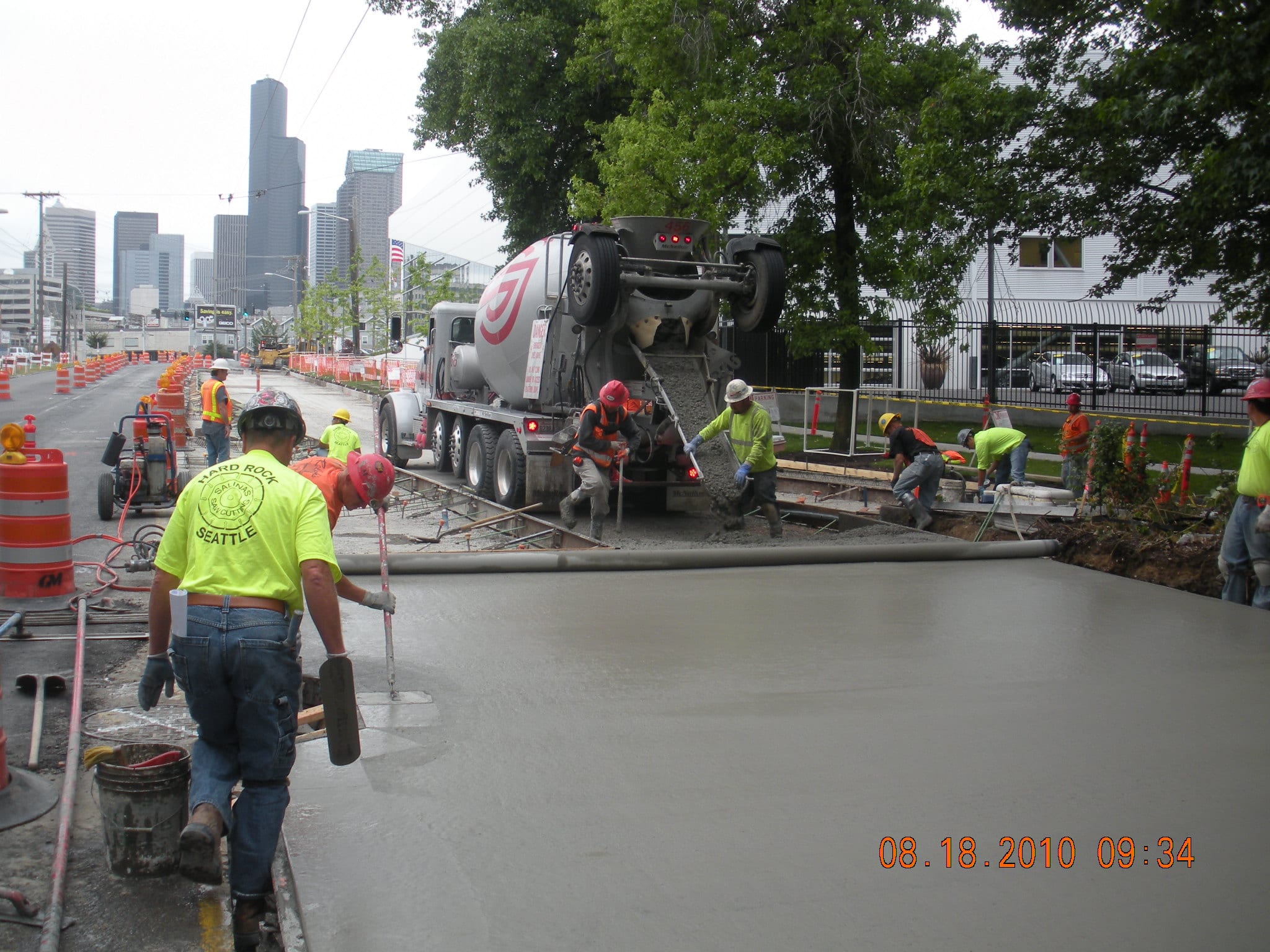
 The carbon footprint analysis for SDOT showed that 88 percent of the department’s greenhouse gas (GHG) emissions result from the use of concrete and asphalt. That is understandable, we do build bridges and pave streets. However we also researched that by maximizing our use of green paving materials we have the potential to reduce over 2,000 tons of carbon a year! That’s the equivalent to the carbon dioxide released by 320 passenger cars over the course of a year (400 million miles), or over one million ten-pound bags of charcoal (elemental carbon) on the ground instead of in the air.
The carbon footprint analysis for SDOT showed that 88 percent of the department’s greenhouse gas (GHG) emissions result from the use of concrete and asphalt. That is understandable, we do build bridges and pave streets. However we also researched that by maximizing our use of green paving materials we have the potential to reduce over 2,000 tons of carbon a year! That’s the equivalent to the carbon dioxide released by 320 passenger cars over the course of a year (400 million miles), or over one million ten-pound bags of charcoal (elemental carbon) on the ground instead of in the air.
So we have gotten busy over the last year in changing our specifications and having conversations with the community about shrinking our carbon footprint. How can we do it? The amount of portland cement in concrete can be reduced by the inclusion of fly ash and slag ingredients called “pozzolans”. Pozzolans are by-products of steel manufacturing and coal-fired electric power plants that would otherwise be sent to the land fill. Replacing portland cement with pozzolans reduces the GHG of concrete and can actually make the concrete stronger and more durable. The critical element in reducing portland cement use is the concrete curing or drying time.
SDOT reduced its GHG output by re-writing the concrete requirements to encourage the use of greener concrete which uses less portland cement.
Why can’t we require that Portland cement be reduced for all SDOT jobs? Cement concrete with less portland cement, or containing pozzolans has a longer curing time. SDOT needs to balance the reduction of GHG with the impact of longer curing times in determining the type of concrete specified for each project. That means a conversation with you, the public. In some cases; like building the Spokane Viaduct project that is an easy decision – it makes the structure stronger and doesn’t take extra time. In some places we want to open the roadway to traffic quickly to reduce detours and idling; particularly for transit. People along the street usually want their driveways open as soon as possible. We are trying to be brave and have a conversation with you on the tradeoffs of using extra fast drying cement to make that happen with each project.
More Info on how concrete is made: http://www.cement.org/basics/concretebasics_history.asp
More Info on pozzolans: http://www.ecobuildnetwork.org/pozzo.htm#intro
